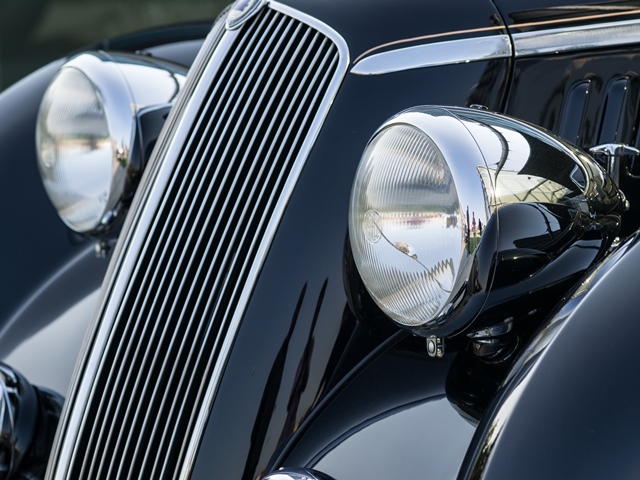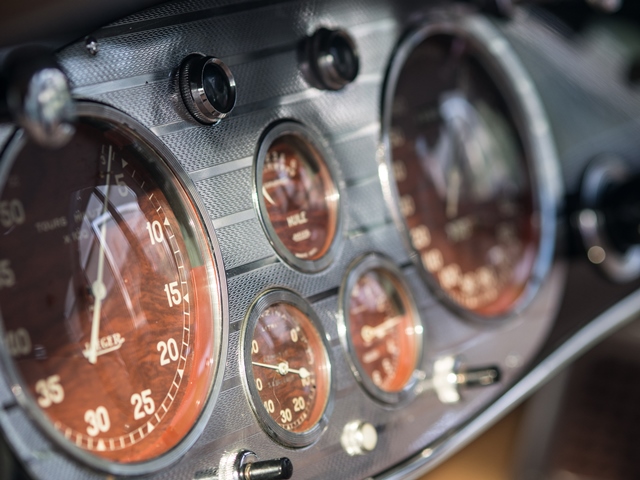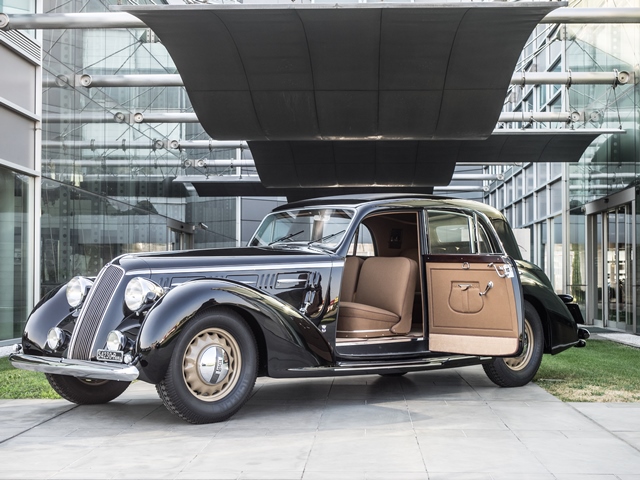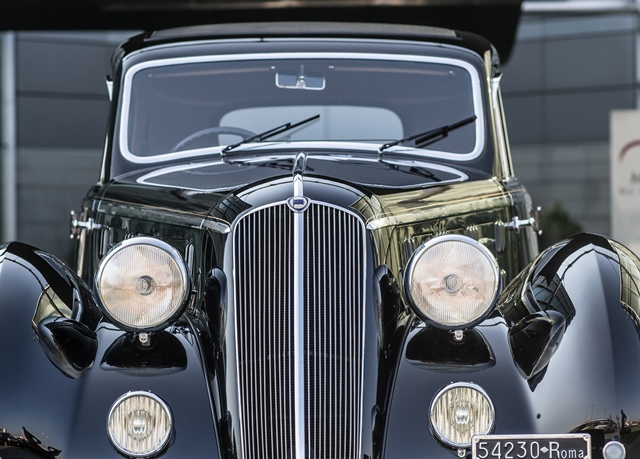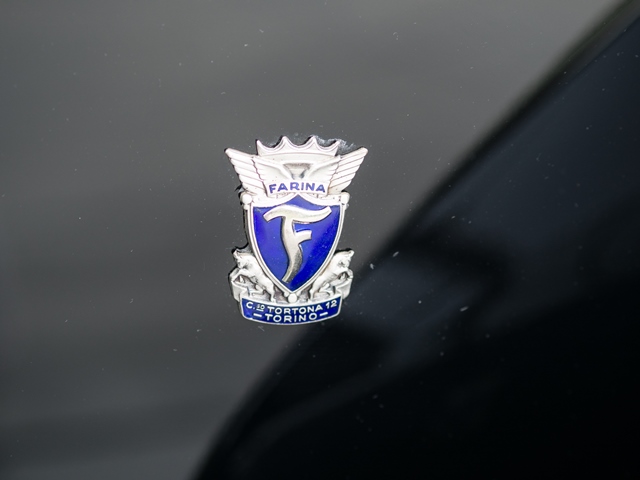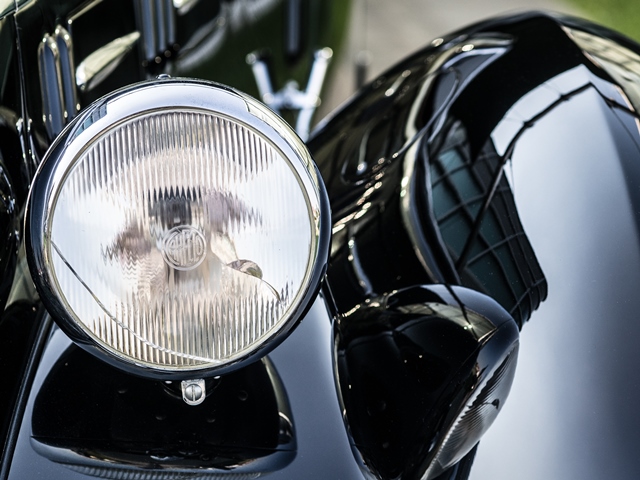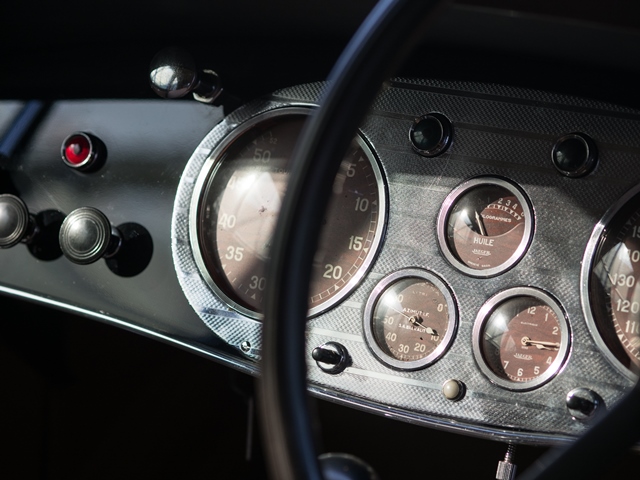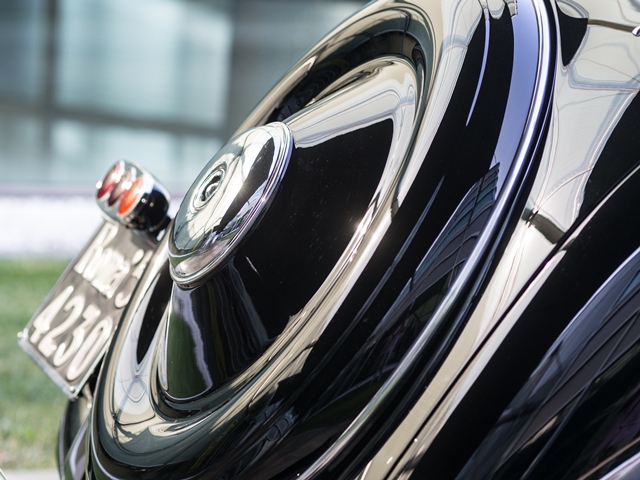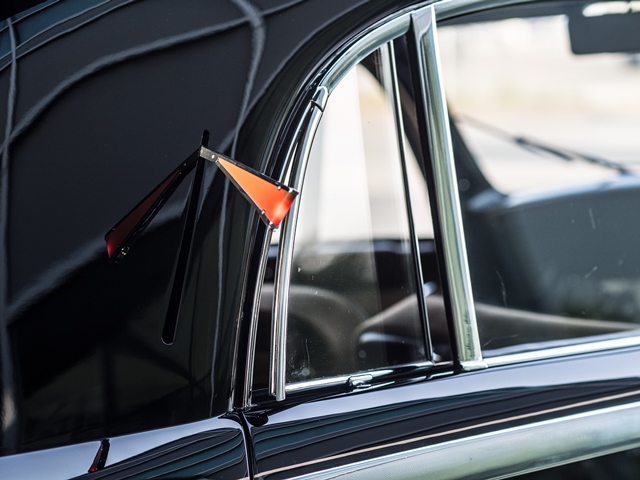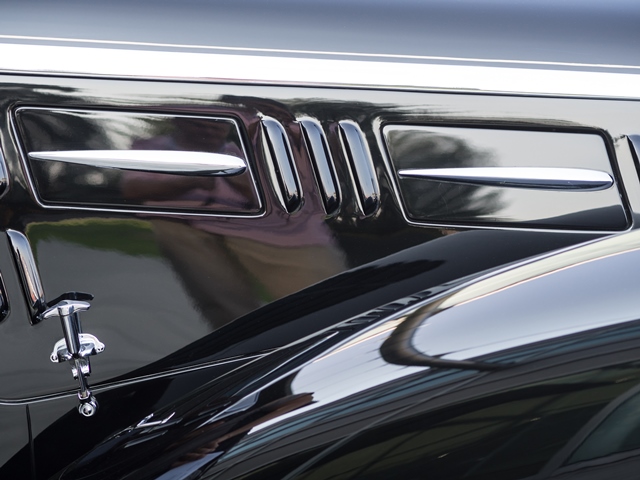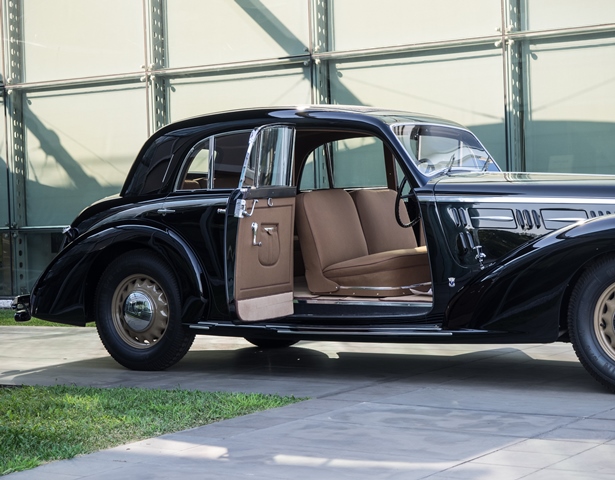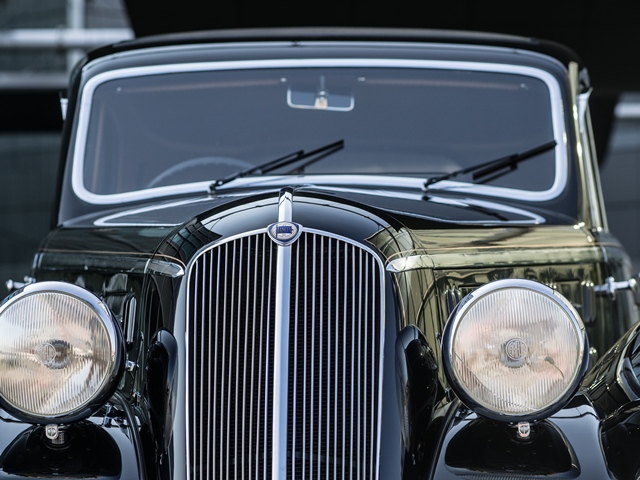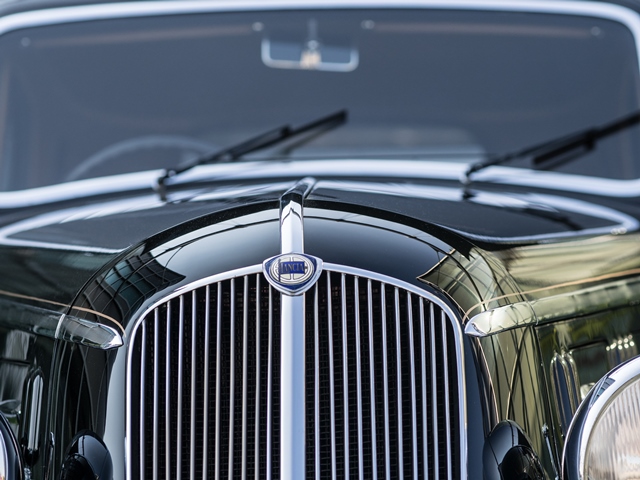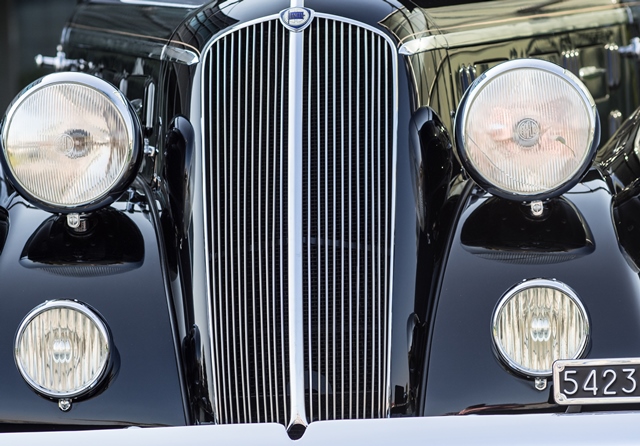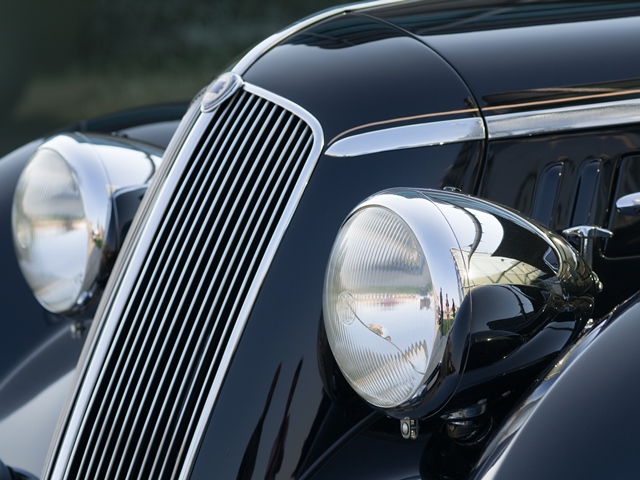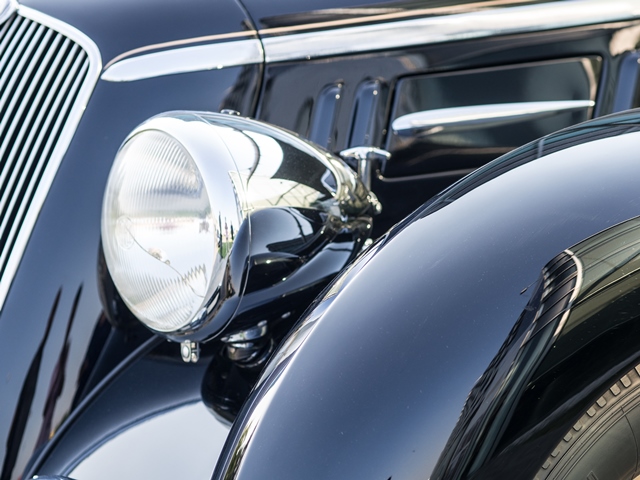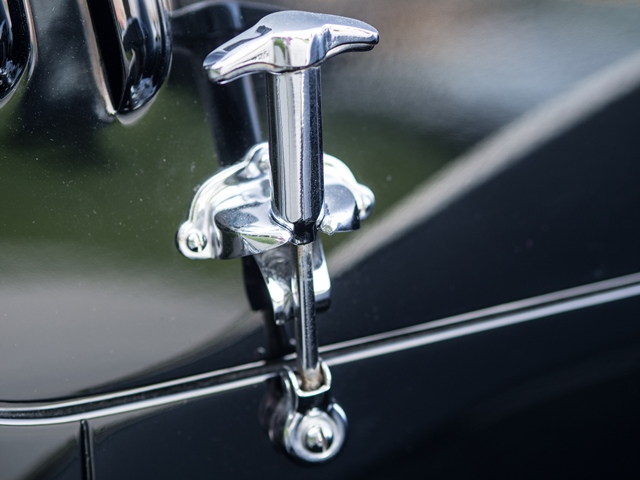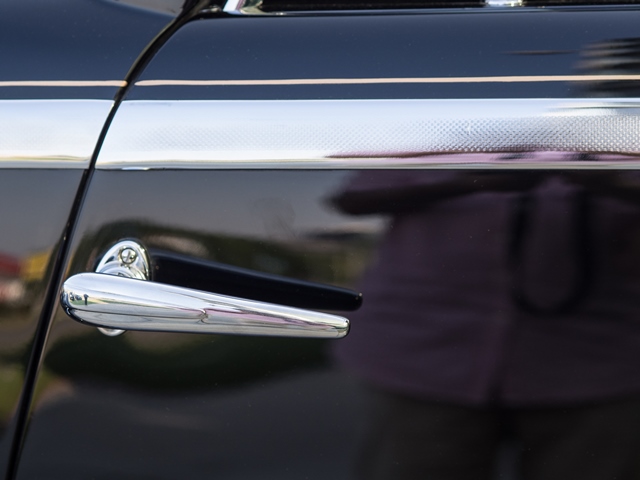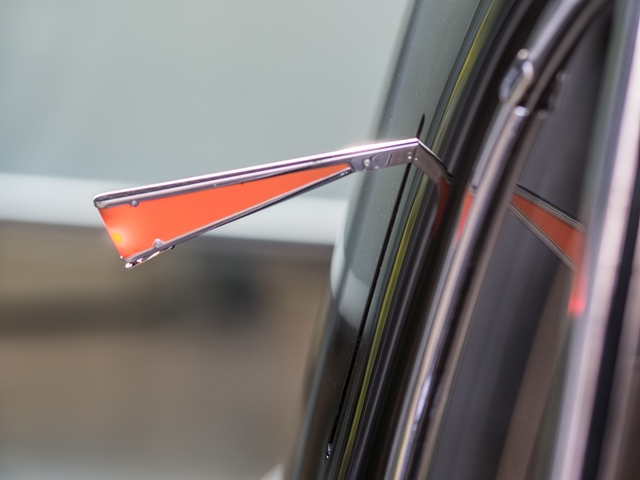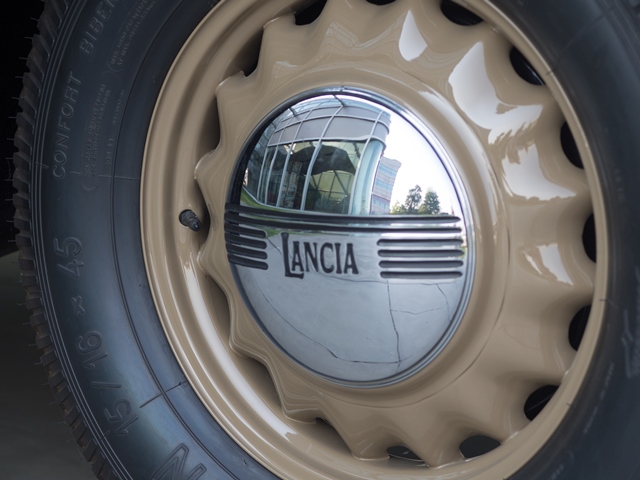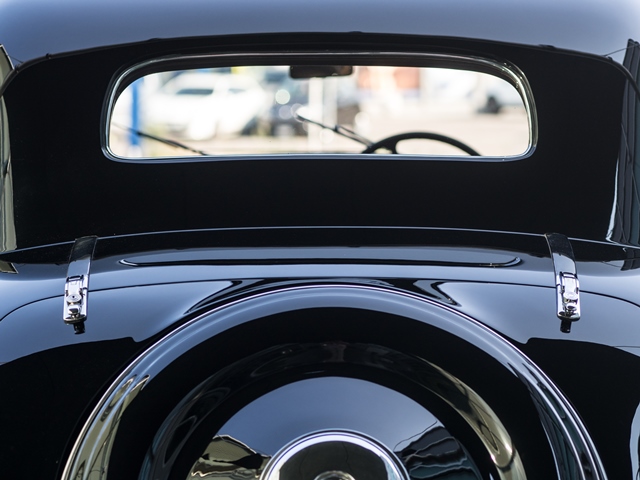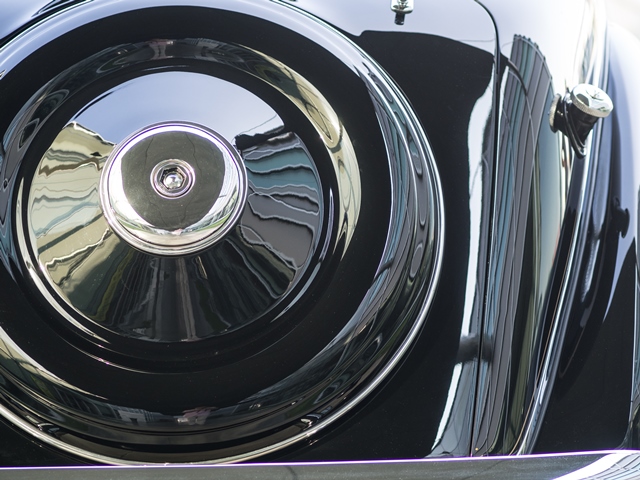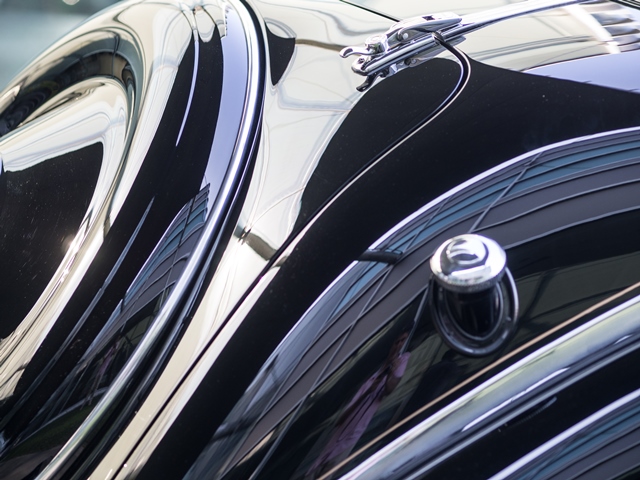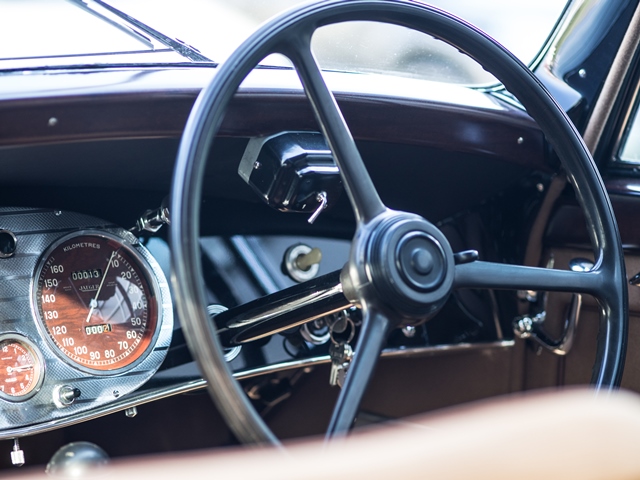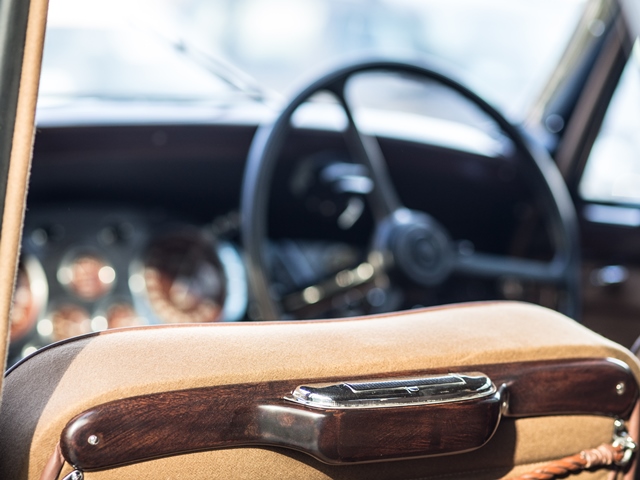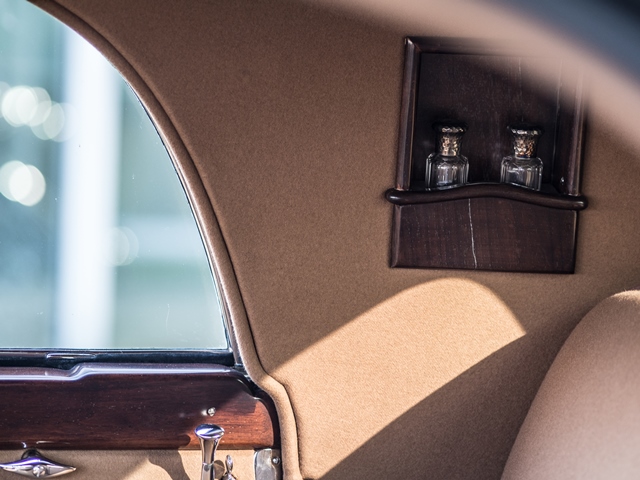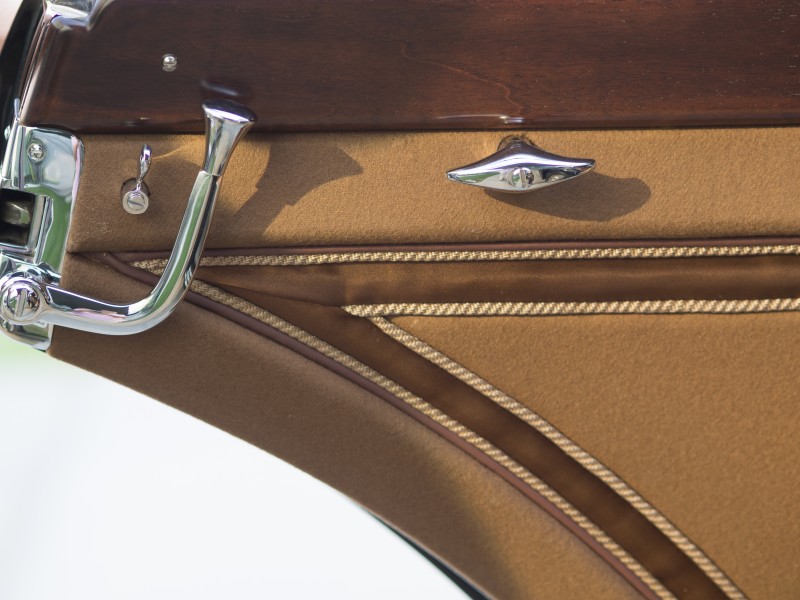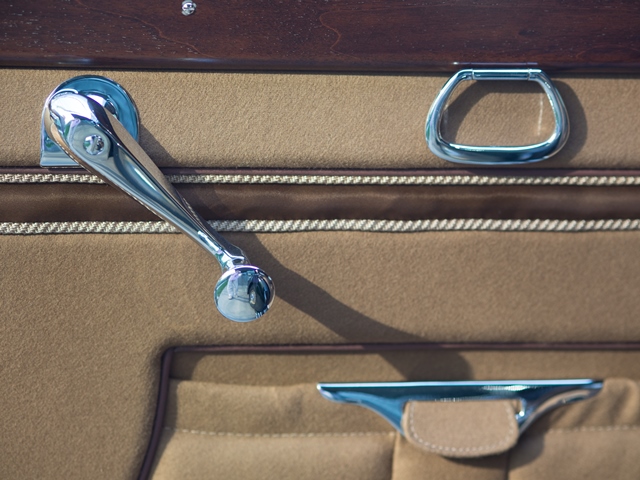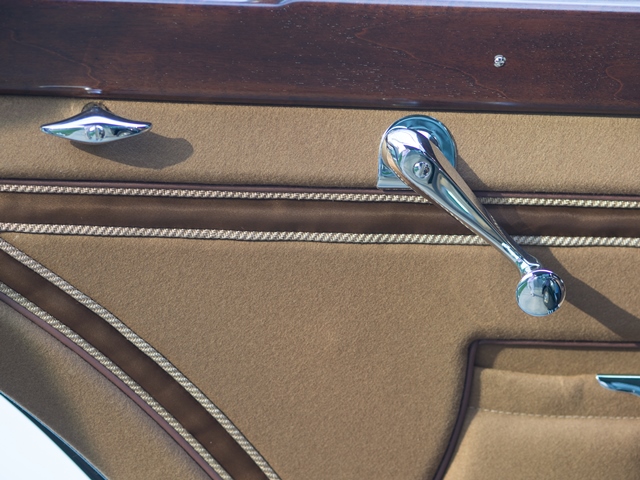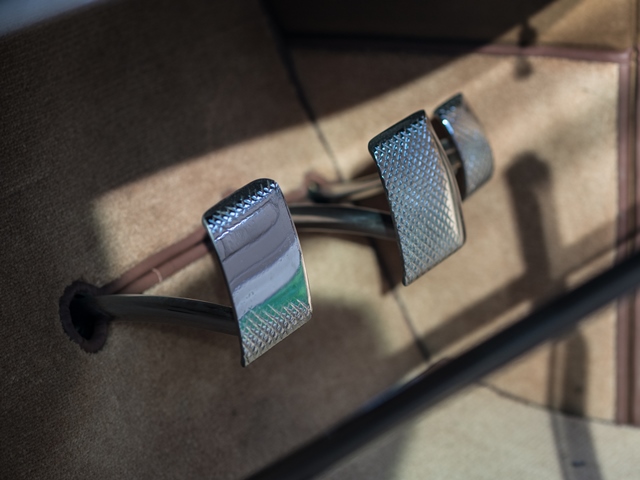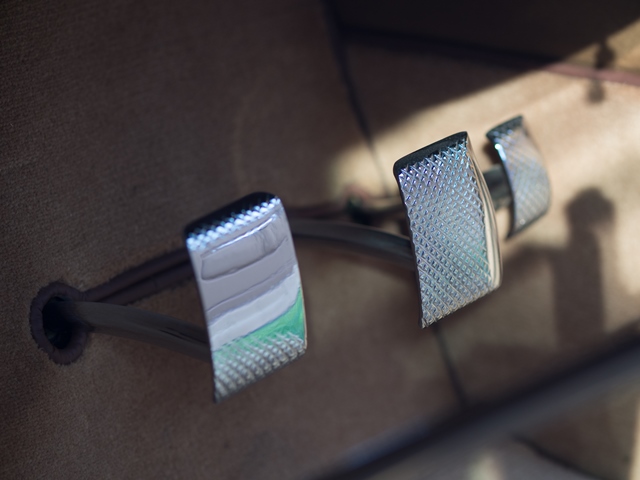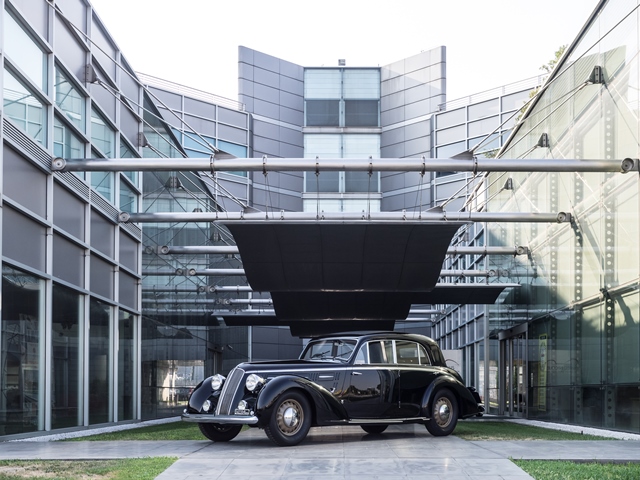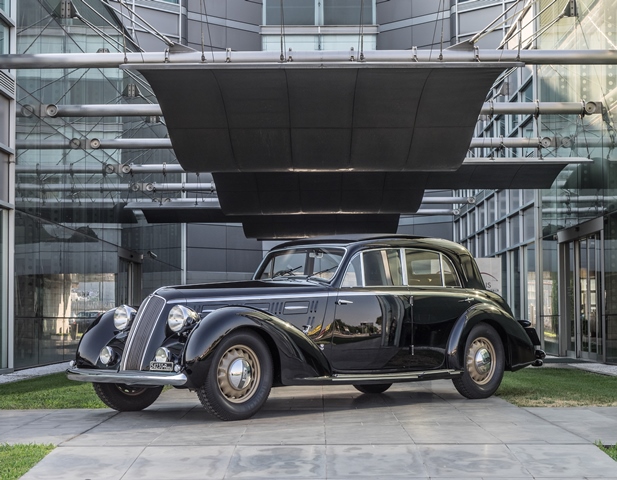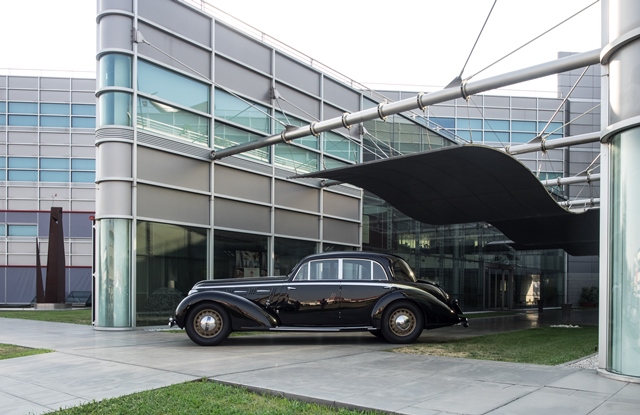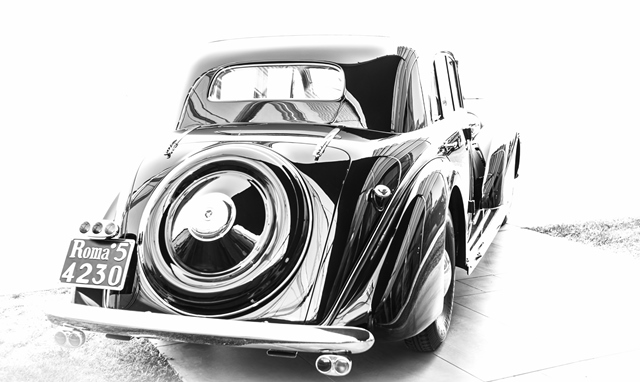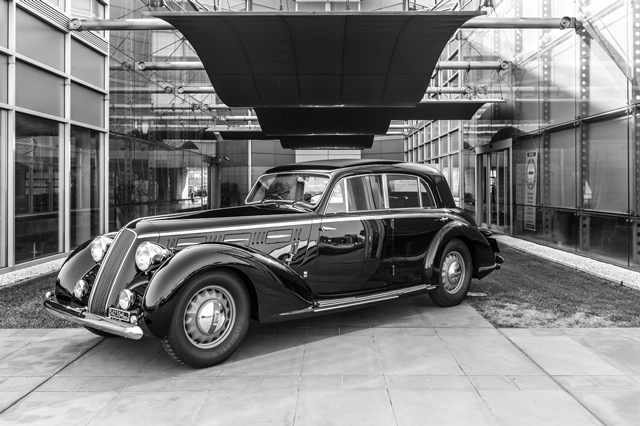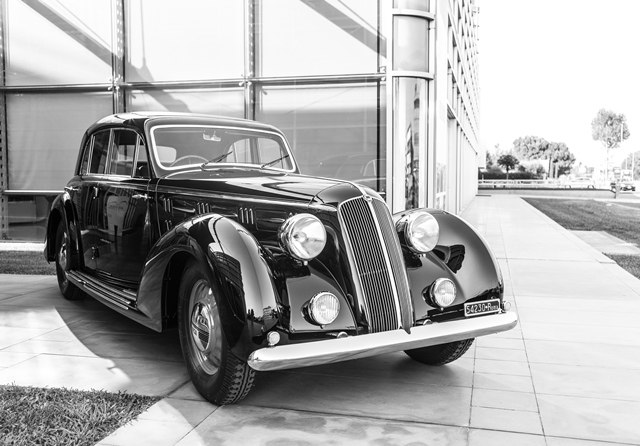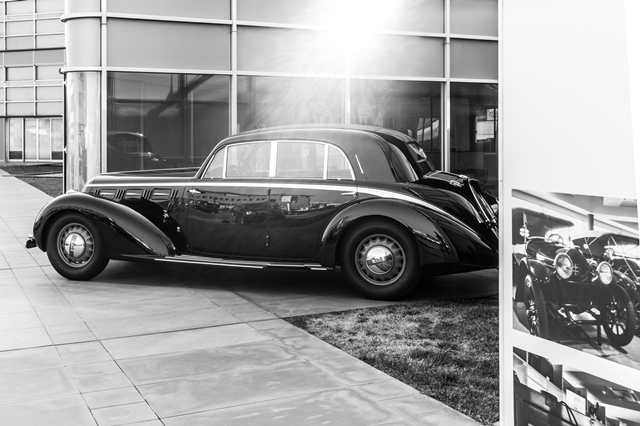Lancia, 1936, Astura Berlina Gran Sport
Lancia Astura “Berlina Gran Sport”, Farina, 1936
The Lancia Astura, a name inspired by a famous medieval castle in the Lazio region, was built at the same time as the Lancia Artena in 1931. These two models are the heirs of the Lambda and the Dilambda and were the production companies attempt at fitting out a more sombre and less expensive vehicle (the Artena) as well as a powerful and sporty car (the Astura). This decision was also influenced by the austerity of the times (following the Wall Street Crash in 1929). The first and second series were available until 1933.
With the introduction of the 3rd series, the vehicle underwent some substantial modifications, from an increase in power to the fitting out of two versions: L (long wheelbase) and C (short wheelbase). The tilted radiator became a basic feature as did the shield emblem which replaced the round one. This version is doubtlessly the one which bore the most prestigious bodywork. Not being a vehicle with a monocoque body, body workers were able to express their creativity and produce a more elevated style.
This example is the 4-light passenger model, a luxurious saloon car favoured by those who loved to drive their own vehicle rather than be chauffeur-driven.
Illustrious names like Pinin Farina contributed to making the Astura one of the top cars in the 1930s. The 4th and last series of the Lancia Astura, produced up until 1939, is remembered mainly for becoming the large torpedo-shape representation vehicle commissioned by Mussolini at a time when the Italian government needed ministerial vehicles.
It was designed by Mario Revelli di Beaumont, one of the most creative designer of Pinin Farina.
2018 Poste Italiane chose this car for a philatelic postcard.

